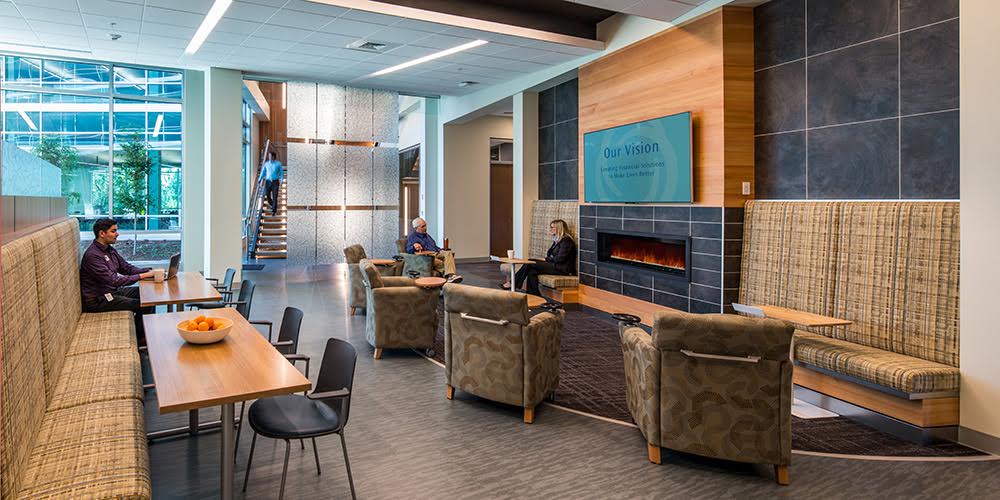Have your open office cake and eat it too

Few workplace design topics are as divisive as the debate between open offices and cubicles or closed offices. Data suggests that open offices are an overwhelming success, with 89% of the highest performing workplaces having an open floor plan. But at the same time, open offices are roasted in the news and LinkedIn.
Understanding the source of this disconnect can help you have your open office cake and eat it too, unlocking the benefits of open plan offices while avoiding the pitfalls. They key is understanding your staff and the work they do, and designing custom solutions that fit your unique organization.
Collaboration
Open offices are common among high-performing workplaces the work people do is changing. Many employees are shifting from focused, individual task-based work to more collaborative project-based work, and this work requires communication and sharing ideas. Open floor plans create an engaging atmosphere where employees are colliding and talking with each other outside of planned meetings, and even outside of their departments. The result is a mixing and sharing of ideas, and efficient delivery of collaborative projects. When you’re working together, conversations and interruptions aren’t a distraction but rather a part of getting work done.
This is great, but what about when you need to put your head down and focus? This is where the disconnect arises.
Distraction
Most news articles and online comments cite distraction as the main obstacle to getting work done in an open office, and there is some data backing this up. Researchers at the University of California found that it takes about 23 minutes on average to get your focus back after being distracted, while interruptions come about every 11 minutes. At that rate it’s hard to get ahead!
But if your team retreats into private spaces, you lose the benefits of collision and engagement that come with openness. So how can you benefit from the strength of both types of workplaces while minimizing their weaknesses?
The Best of Both Worlds
The key is to look at your workplace as more than just a place to hold employees, but instead to design your workspace strategically around the activities that your employees will engage in. For example, many of your employees may be more productive in an open, collaborative space, but some portion of their responsibility requires focused work away from a distracting environment. You could provide them with workstation in an open plan office while also making private working areas available when needed.
The key is to look beyond one-size-fits-all solutions and find one that helps your staff feel comfortable, confident, and productive. Surveying your staff to understand their day-to-day work on an individual and overall level, as well as what is and isn’t working in their current workplace, is a great starting point.





